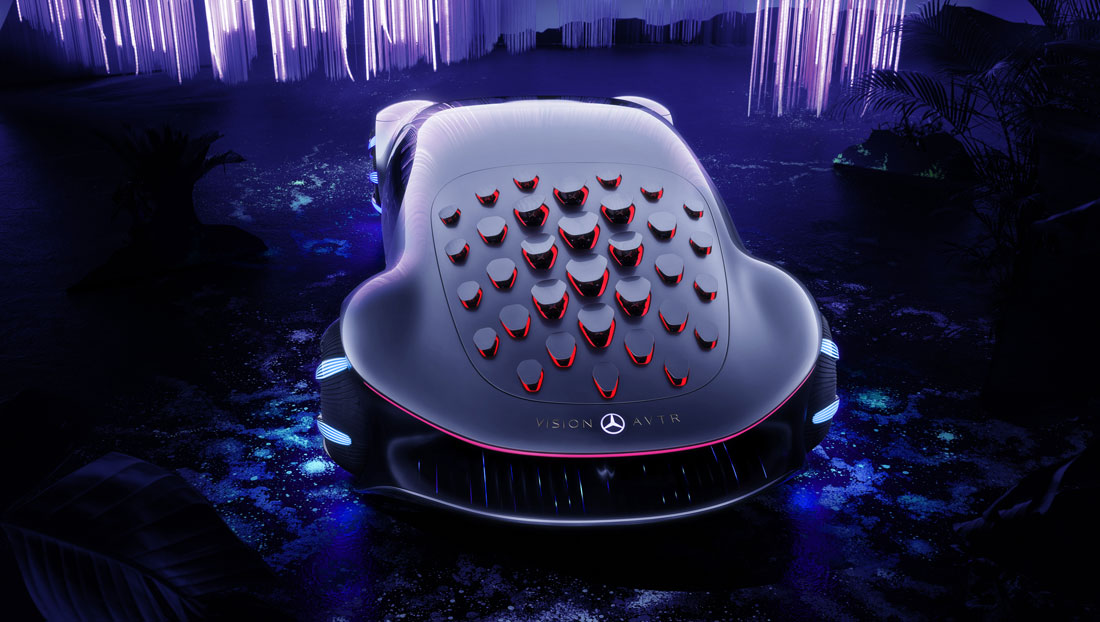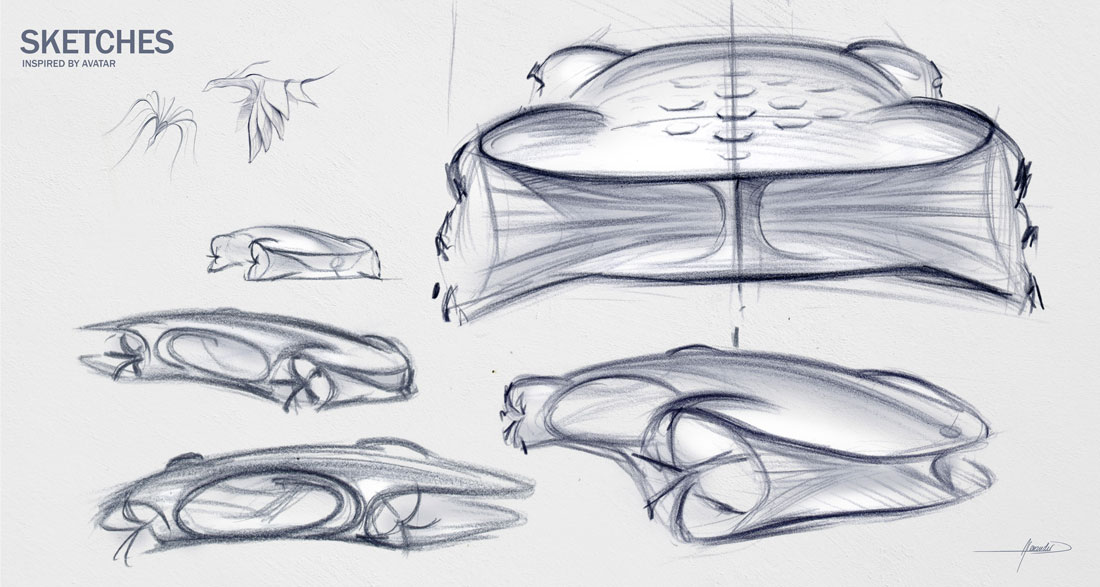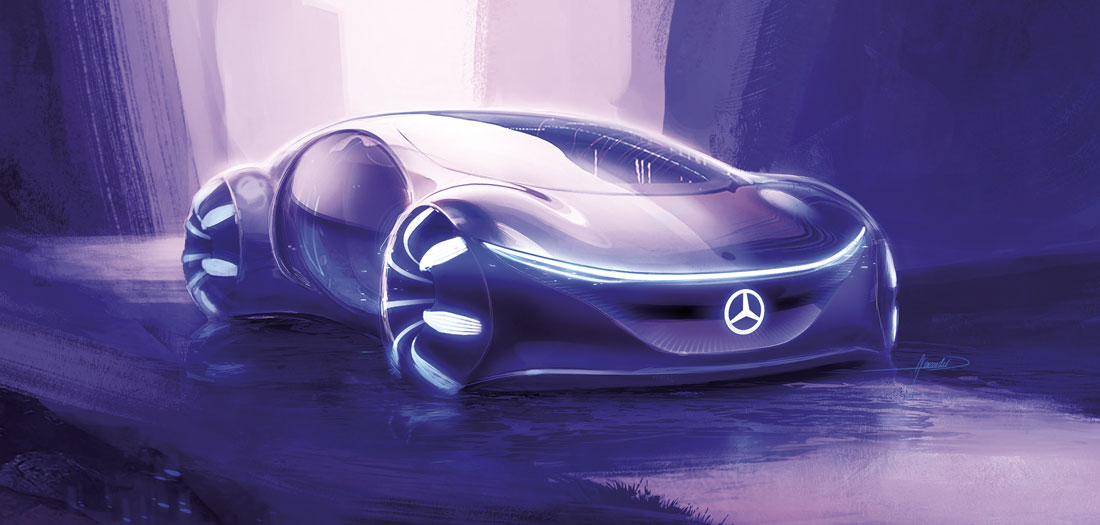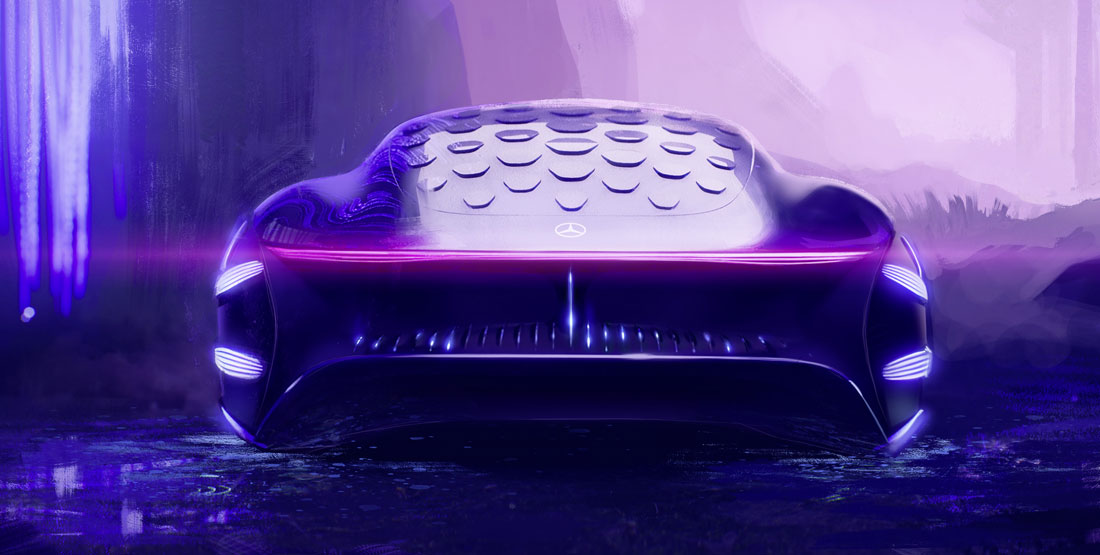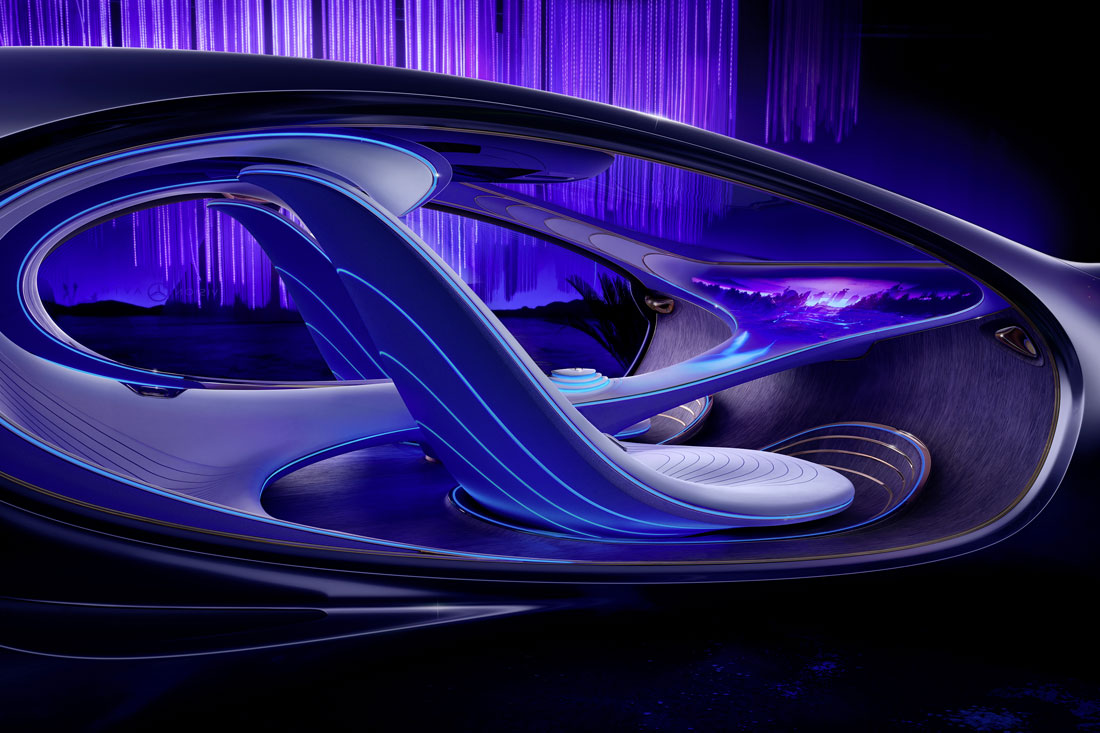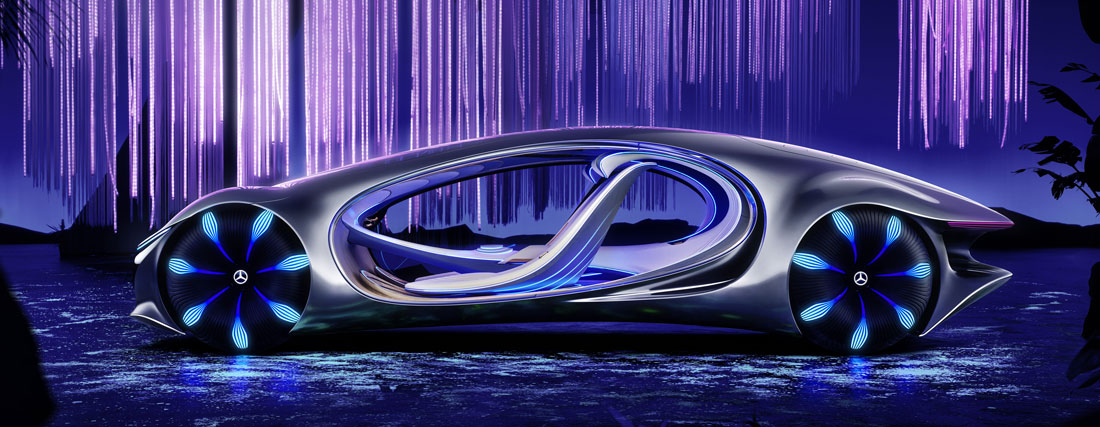Crouching animal-like in full flow with an abundance of luminous scales incessantly stimulating the eyes of the observer, the most magnetic show car of the last CES in Las Vegas might appear at first glance to have been conceived as a delight to the eyes, a sensorial show for decryption through the lens of electronics show exhibitionism. At the heart of the AVTR project, however, lie many other values.
Beyond normality
“It’s true, we wanted to go way beyond “normality”… even beyond supercars”, says Steffen Koehl, head of Global Advanced Design at Mercedes-Benz, with a smile. “But right from the very first meetings with the team that made “Avatar”, the film that inspired the car, we realised that the original film and the upcoming sequel offer a very profound vision of man and nature in harmony and the philosophy behind it. It is an approach that is perfectly in line with the ideas we have had for a long time about future mobility, so it was this that guided the entire development of the car”.
Fusion between exterior and interior
So beneath the scenic packaging, there unfolded some surprisingly conceptual content, starting with the idea of merging the outside environment, cockpit and UX interface into a unicum, in its turn ready to adapt to the user, with a strong orientation towards the holistic well-being of passengers.
Man-machine interaction
“It is no coincidence that a biometric connection is created between vehicle and users: the driver is recognised by his breath measurement as soon as he lays a hand on the centre console, the parents’ heartbeat is reproduced by luminous pulses on the backrests of the front seats to keep the children travelling in the rear calm. We call this confidentially “human machine merge”.
Redefined commands
On the whole, intentions appear to be decidedly more advanced than the albeit intriguing redefinition of control functionality, which involves the elimination of any physical button, gesture controls and the possibility of having several easily activated icons projected on to the driver’s hand after he has simply raised it towards the roof. “There are also numerous devices that allow the senses of the occupants to engage with the surrounding environment in a truly immersive experience aimed at making autonomous driving much more interesting”, Koehl says.
“One bow” silhouette
On the outside, EQ range canons are pushed to the extreme by an approach that plays on the absolute continuity of the surfaces and, of course, on the subtle elimination of all boundaries with the interior: “The radiator grille is borrowed from the electric cars currently in production, the roof panel is developed according to the usual “one bow” design, but the transparent doors and, above all, the theme of organic forms determine a very different balance, characterised by ubiquitous bionic references and multiple links between interior and bodywork”. Finally, at the rear, thirty-three luminous “scales” act as signals and greet the owner as he approaches. “Just as if the Vision AVTR were alive!” exclaims Koehl.
(Full article in A&D no. 241)

